In the year 2025 I experienced two massive water outages in Richmond Virginia, watched multiple parts of the nation suffer under flood waters, and conducted a 12-mile hike on the Appalachian Trail, in the dark of night, while rationing water.
Water has worked its way further up my list of needs in a survival situation. In fact, your access to clean water and ways of cleaning water should be a top priority when it comes to survival.
We have also been doing a share of fasting in our community and found that going 3 days without food is not nearly as bad as going 3 hours without water, particularly under intense heat or heavy workload.
The more ways you can access clean water, the better. Having multiple sources of water and means of filtering is all part of a quality emergency water system.
The Macro on Microns
If you ever purchased a water filter than you have read about microns. I was never great at science so I will make it easy for you.
When you see the word microns just think of holes that water and pathogens can get through.
The smaller the micron the more effective the water filter is at keeping the bad stuff out of your filtered water.
The reality of the micron process alone is that some viruses are very small, and some chemical contaminants cannot be filtered out.
That’s the reality water filtration.
 Our clay pot is made of porous material that acts as a filter. From my research it looks like a clay pot water filter is around 20 microns.
Our clay pot is made of porous material that acts as a filter. From my research it looks like a clay pot water filter is around 20 microns.
This will remove a lot of contaminants, but it is far from pro grade filters which can be as low as .5 -.2 microns.
Still, a gravity filter like this one will significantly change the quality of water you are filtering from a creek, lake, or rain barrel (I heavily recommend you learn how to make a cheap water collection system).
The idea of developing such a filter I borrowed from Eddie Swartzentruber, who presented an interesting DIY water filter project in The Amish Ways Book.
The solution he presented is, of course, more complex than what I used.
However, it is still non-electric and capable of filtering water from parasites, bacteria, and other harmful chemicals and waterborne pathogens.
You can see his project here, complete with images and all the necessary details.
If you want a step-by-step video guide, you can find it in The Amish Ways Academy.
Cost of a DIY Gravity Powered Clay Pot Water Filter
This entire operation from dirty water to clean costs under $30 to produce.
Strolling through the garden section at a local Lowes I found the clay pots I was looking for and the 14 inch seemed to be just the right size. Though I was eyeballing it hoping it would fit into a 5-gallon bucket.
>> Discover The Super Device Used by Green Berets to Produce Water From Air
The only sure way to know was to grab one of those end cap 5-gallon buckets in the store and bring it back. The 14-inch clay pot slid right into the bucket and was a perfect fit. This pot cost just $22 and the bucket alone came in at just over $3.
Materials

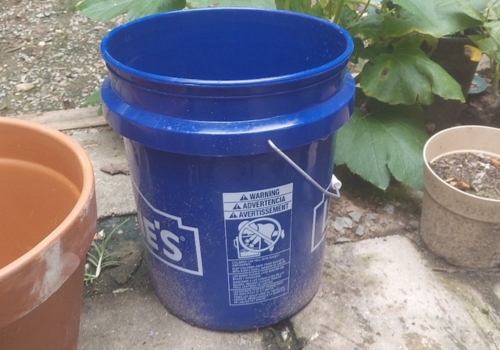
Step By Step Process
Step 1.) Plugging the Hole – if you buy your clay pot from a place like Lowes then it will have a hole in it because it is designed for growing. When we are trying to hold water in the pot, we must plug that hole.
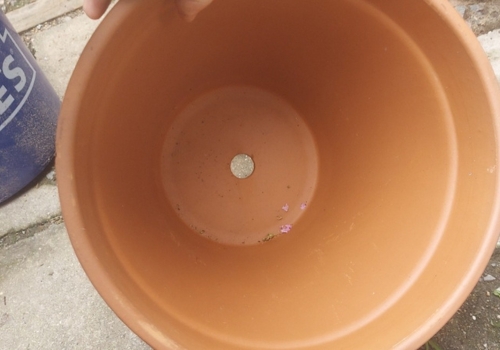
There is a surprising variety of different sized plugs you can buy online. Way more than I would have ever imagined. That said, you can plug that hole with anything that will stop water.
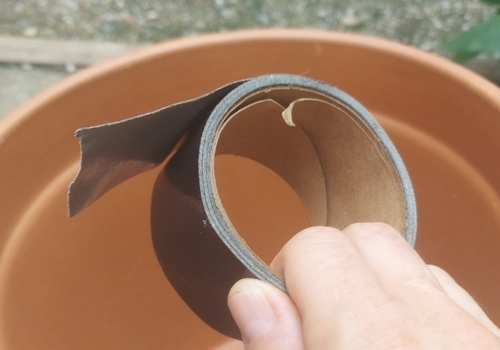 I used some Gorilla tape to cover mine. It worked great!
I used some Gorilla tape to cover mine. It worked great!
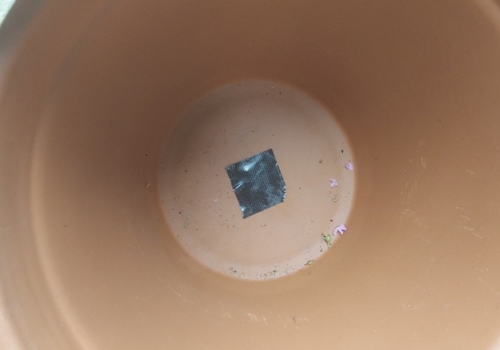
Step 2.) Sit the pot inside of your chosen, clean, 5-gallon bucket. This bucket will catch the filtered water that comes out on the other side.
Step 3.) Fill the Clay Pot – Now you are going to fill the pot up with water that needs to be filtered. This is where this method shines for me because it’s a big pot and can filter a lot of water in one sitting.
I went to a nearby creek for this.

Once you have added water place the filtration system somewhere out of the sunlight in a place it will not be disturbed. You could cover it if you like.
Step 4.) Wait – The reason this process works is because the water drains slowly from the clay pot into the 5-gallon bucket. This is going to take several hours but in time all the water will filter through.
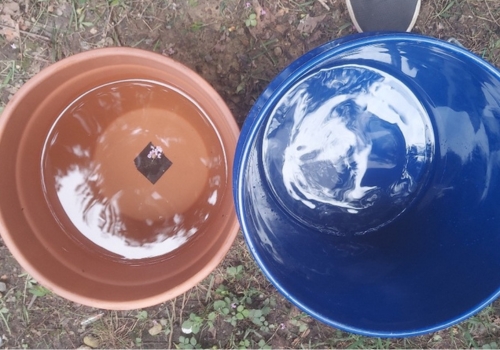
At this point I would still boil the water if I were using this method. That said, the clay filter will remove debris and contaminants, making the water much clearer, and improving taste, too.You can see the results below:
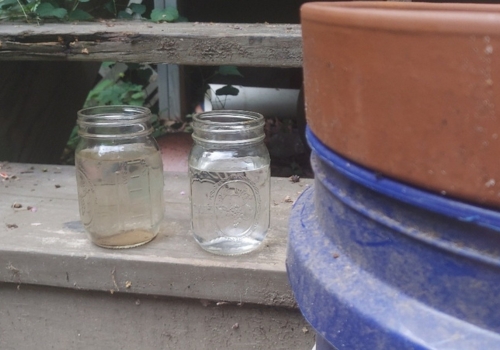
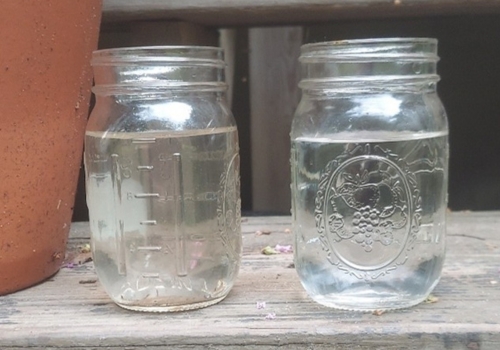
A Dusting of Activated Charcoal
Activated charcoal has an insane surface area and if dusted the bottom of your pot with activated charcoal or even stirred a spoonful of it into the water that was filtering it would aid in filtration and flavor of your finished product.
Related: Medical Uses For Activated Charcoal
From Scratch Clay Pot Water Filter
You have clay underfoot. If your soil is high in clay content, then making your own clay pot is certainly possible. Usually, the base material is equal parts sawdust and clay. Work these together until you get something that resembles clay.
Another thing you can add to this mix is colloidal silver. Colloidal silver is antibacterial and will add another element to the filtration process.
You could even add some activated charcoal to your clay pot as this also creates more surface area to the filtration process. Just sprinkle it into the clay as you work it all together.
Form your clay around something that is about the size of the pot you are looking to make and then fire the whole thing.
Some Smart Alternatives
Filtering water is always a challenge. What I presented in this article is an example of a simple and inexpensive process, but the reality is that I still had to buy the materials used.
In a post-SHTF situation, or if I’m somehow forced to go off-grid (I learned a little something about that from here), that might be impossible for me. Not to mention that, after SHTF, I might not even have water.
The solution I decided to go with, for greater long-term security, is purchasing a water generator. In fact, I bought two. Let me explain why.
The Water Freedom System is the solution I considered for my own household.
Proven in the toughest military zones across seven countries, this device turns desert air into clean, drinkable water—using nothing but the power of condensation.
From what I’ve seen, the declassified U.S. Military plans for this device are now available on a discount that makes purchasing it a no-brainer.
I also invested in a solution that can help me when I want to retreat to my bug-out location.
This easy-to-build water generator can fit in my backpack. It works very simply and produces large quantities of water.
On top of that, it cost very little, so it seemed like a smart idea to have it on hand—and I actually use it quite often.
Check it out here and see if it fits your prepping plans!
Final Thoughts on Clay Pot Water Filters
In my opinion, you cannot have enough ways to procure clean water for yourself and your family. The more options in the toolkit the easier it will be to adapt.
There are some things about clay pot filters that really stand out to me.
They can scale because the pot sizes vary.
They are so simple.
They are largely hands off, nearly passive, so you could set up 3 of them and go to bed for the night only to wake filtered water. This is old tech that works today, and it would be crazy not to take advantage of it.
Imagine never running out of drinking water, even if your tap goes dry or electric pumps fail during an EMP or blackout. This compact condensation device can turn the air around you into a reliable source of pure water. It’s especially effective in summer, when warmer temperatures increase the amount of water vapor in the air. Yeah, that’s real! The more heat outside, the more water your device can extract!
You may also like:
Why You Should Never Drink Tap Water Again
Here’s How to Use Water Smartly to Cook Long-Lasting, Nutritious Food (Video)
How to Purify Water Inside a Car When SHTF (Without Fire or Electricity)

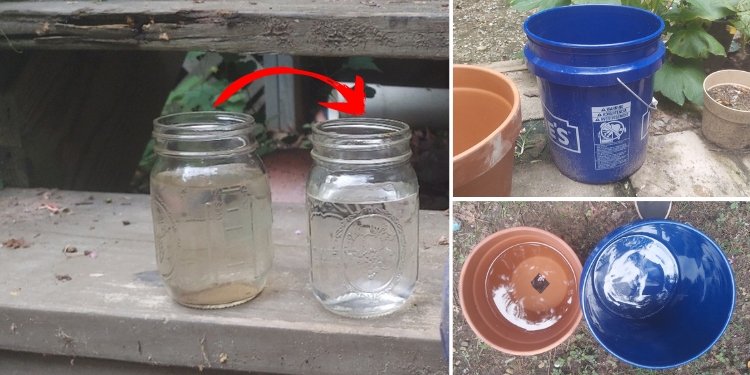
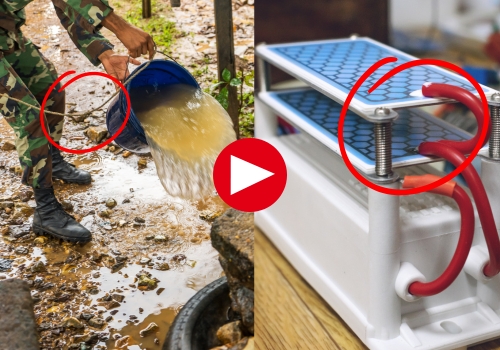











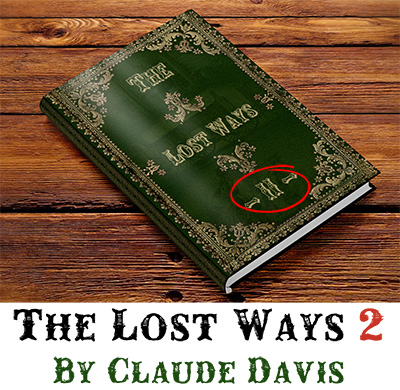
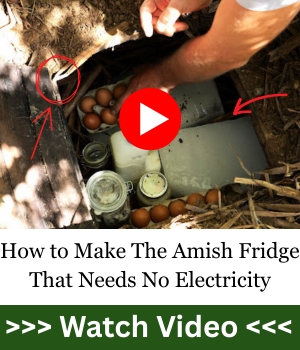


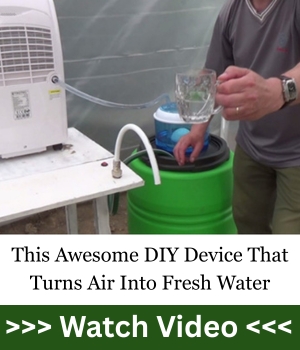





Interesting article on water….i have 1 question maybe 2…..how come we can’t buy a water generator at Lowe’s all ready put together with a 10 year guarantee right now ? how come there are no articles on starting a trading post ? I like the clay pot hack…thanks
Please add, surviving disasters, hurricane, tornados, floods and fire to you messages. Somewhere, EVERYDAY, the SHTF.
That’s a classic bushcraft trick, mixing clay with an organic binder like flour, sawdust, or even rice hulls so it burns out in the kiln and leaves pores for filtration. Ratios vary, but most old-school methods ran about 1 part flour to 3–4 parts clay, with walls roughly half an inch thick so they don’t crack under heat. Firing temps depend on the clay body, but you’re generally looking at low-fire ranges (around 900-1000°C) to keep the pores open instead of vitrifying the clay solid. It’s not an exact science without testing, but the principle is sound, and it shows how our ancestors improvised filtration long before factory filters existed.
I read an article years ago about making a pot with a mixture of clay and flour. Firing the pot (in kiln) would burn out the flour, leaving the clay pot with microscopic holes. Does anyone have the info on the flour, clay ratio, firing time and temp? and the thickness of pot walls?
Like any filter medium, the clay pot’s pores will clog up. What then?
nothing lasts forever, especially in survival mode. Clay pores will clog just like commercial filters, and anyone who thinks they’ve built a “forever filter” is fooling themselves. Dirt, algae, biofilm, all of it will gum up the works over time. That’s not a flaw, that’s physics. The key is knowing it’s coming so you’re not blindsided when the drip slows to nothing.
When it happens, you’ve got options: scrub the pot down with clean sand or a stiff brush to clear the pores, or cycle between two pots so one can dry out while the other’s in use. Some preppers even do a low bake in a fire to burn off residues. The point is, you plan for maintenance the same way you stock extra ammo or rotate canned goods. A clogged filter isn’t the end of the line, it’s just another problem you solve before it kills you.
I like this idea. It’s simple and easy.
I’d prefer to use a food grade bucket. At my grocery store’s baking counter, they’ll give you food grade buckets for free if you ask. They’ll give you lids, too. I asked for a variety of sizes, and they were only too happy to load me up!
The buckets did require thorough washing, and the smell of frosting permeated in a couple, so I set those out in the sunshine for a few days to help mitigate the smell.
The lids do not fit tightly without a lot of effort, although purchasing a gamma lid is an option.
In the clay pot and water scenario, I could see wanting to use a lid after the water is filtered to keep insects or debris from falling in if you’re not immediately storing the water someplace else.
.
That’s a solid tip. food-grade buckets are one of those underrated prepper treasures most folks overlook. Free from the bakery, tough enough to haul water, grain, or bulk supplies, and with a gamma lid they become airtight vaults. You nailed the biggest downside, though: the frosting stink. A good sun-bake or even a rinse with vinegar water usually knocks it down, but it’s a reminder that “free” often comes with hidden work.
And you’re spot on about lids in the clay pot setup. No point filtering water just to let mosquitoes or dust ruin it. A scrap of clean cloth, a wooden cover, or a tight lid is cheap insurance against contamination. That’s the prepper way, layer solutions. Clay pots, buckets, gamma lids… every piece has its place, and when you stack them smart, you’re not relying on luck when the taps run dry.
Sad to say, more often than not, the clay in these unglazed pots is full of all kinds of heavy metals that will happily leach into your drinking water. Lead, cadmium, etc…making this a very bad idea, especially for children.
You’re dead right to flag the risk-most folks don’t realize not all “unglazed clay” is created equal. Cheap imports, bargain pots, and decorative terracotta from big box stores can carry lead, cadmium, and other nasties that have no business in your drinking water. That’s not paranoia, that’s just the ugly truth about modern manufacturing shortcuts. If you grab the wrong pot, you’re not filtering water, you’re dosing your family with toxins.
But here’s where the prepper mindset kicks in: source smart, test smarter. Food-grade terracotta and pots certified for cooking/baking don’t carry the same dangers, and a simple lead test kit from the hardware store can tell you in minutes if your clay is clean or contaminated. Nobody’s saying “just grab any flower pot and drink from it”, we’re saying learn the difference, secure the right gear before shelves go bare, and have a backup that doesn’t rely on FEMA water trucks. Survival is about cutting through the myths and the risks.
if its from china, better say NO
I think they send US all their toxic waste, one toy, clay pot or pot roast at a time.
Remember who is trying to end our need for china
Kre…As far as China…I’ve lost 3 members of my extended family to fentanyl …the chemical’s i guess come from China then to Mexico for the cartel’s to create fentanyl a very deadly drug….at least they don’t just walk across the border any more…..now they have to work at it a little more…and hope i don’t find them…..